Bush House in the 1980s - the height of the Cold War: we all knew why we were there. The BBC was the voice of the 'free world' to the people of the eastern bloc. The External Services were broadcasting in thirty-three foreign languages as well as in English. Listening figures were colossal: 120 million for the English service, 19 million for the evening Polish transmission, for example. Such a reach would never be achieved again, especially after the fall of the Berlin Wall.
So, we timid trainee Studio Managers were highly motivated and keen to get 'on air'. At the time, SMs worked across the full range of language sections and we had a lot to learn and to look forward to: tape editing in Arabic, for example, would present an interesting challenge.
After three months of intensive training at Wood Norton we were all a bit nervous, mainly because of the 'scary' GP desks on which we had been practising! As a consequence, when we arrived at Bush house for the start of our on-station training, we were relieved and delighted to be introduced to the DK4/19 - the SMs' desk.
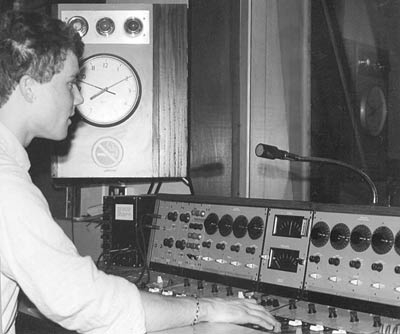
The DK4/19 was perhaps the first ever 'assignable' desk. At the top of the nine channels there was a large selector knob. You just had to turn this to route the source to the channel. You could choose from the two microphones (both STC4038s, of course!), common tapes, individual tapes, grams and up to four outside sources (switched to the studio by the control room - no routers in those days). Only one studio (S8) had that new-fangled machine, the Compact Disc Player.
Each channel could be routed to one of two RSAs (Response Selection Amplifiers - i.e. equalisation) with a basic treble and bass response.
The faders worked in the BBC manner - open towards the operator - and each channel had a green light/fader switch. The Cue Programme/Clean Feed switching was achieved in modules to the right of the desk, which also allowed 'Tone to CF' and 'Talkback on CF'.
In the centre of the desk were the monitoring controls: two 24-way switches to accommodate the vast number of Bush House networks, all colour-coded. It was very easy to be one point out between the studio ringmain and the cubicle ringmain causing much confusion in the studio! There was no balance control - this was strictly a mono environment - and monitoring was on a single LS5/8.
There were two facilities that were unique to Bush House. Firstly the 'Auto PTT' - or Pre-Transmission Test. At ten minutes before transmission the computer in Control Room would signal the PTT modules in the studio and a light would indicate the network that was ready for transmission. The SM would press the button to indicate that the studio was ready to work to that network, and the desk would send line-up tone. If the button hadn't been pressed with five minutes to go, an alarm would sound in Control Room and the DOM (Duty Operations Manager) would be alerted to go and find the sleeping SM!
And secondly, a module marked 'Int Sig' for Interval Signal. All international broadcasters use interval signals. This is a short musical loop that is transmitted on the appropriate short-wave frequency prior to transmission to help the listener tune-in correctly. It is also used in an emergency to sustain the frequency if there is a loss of audio. In Bush House there was a choice of 'V', based on the Morse Code for that letter (di-di-di-dah), a left-over from the 'V-for-Victory' campaign during the second world war. This was used for transmissions within Europe. Elsewhere the signal was a tuneful 'Bee Bee Cee'.
Finally on the desk was the all-important 'Cubicle Announce' switch. In those days all were required to be 'vocal' SMs. We were all given a voice test to ensure we were suitable for making the opening announcements at the start of the language transmissions. One that springs to mind is "This is London calling Latin America with our programmes in Spanish". The problem was that this key was a latching switch, so if you didn't keep your finger on the button while announcing it was easy to forget to un-latch it. This meant you were left with no cubicle monitoring - and any dumbfounded mumbling would be broadcast around the world while you worked out what was going on!
The DK4/19 was state-of-the-art, but there was a variety of equipment in use at that time. Much of it hadn't changed since the early 1950s and Type B desks were widely used right up until the end of the 1980s.
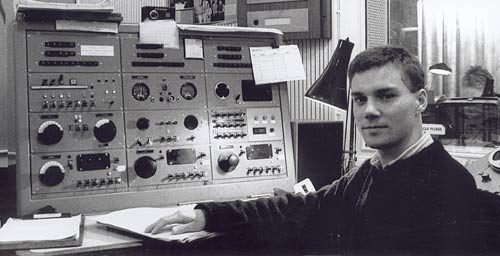
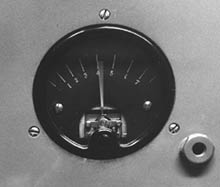
Another oddity was a switch marked 'Green Bars'. This was only to be engaged in the event of a royal death and sent an alarm signal to the remote relay-stations around the world to opt-in to London's main output immediately (I don't think this was ever used).
A final oddity was the black box mounted right on top of the desk labelled 'Stop Banging'. This did exactly what it said: It switched on a flashing light to any builders working in the vicinity of 'Green' to down tools for thirty seconds while the announcer's mic was live!
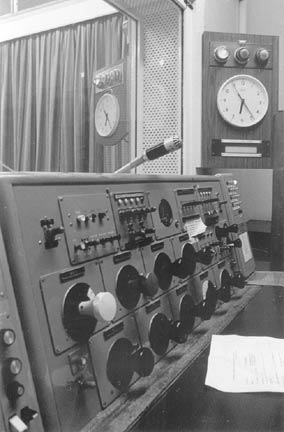
Type B equipment (right) was prevalent throughout the building, in both the SE Wing and Centre Block. Again, the Type B was considered SM-friendly. The feel of the rotary faders was said to be very natural for voiceover music-type operations, though you had to master the 'cue-light-thumb' action: each fader had a fleeting-action switch at the bottom-right of the fader, which had to be operated with your left thumb to allow your right hand to fade down the music on another channel. This technique has died along with the Type -B desk! Later studios were equipped with foot-operated cue lights.
Some Type Bs had EQ that could be switched into the main output. These units were so coarse that their response curves met in the middle. So if you selected full cut on treble and bass, you ended up with no output. This was frequently used to puzzle trainees!
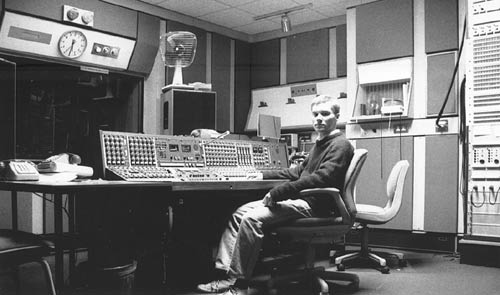
Also the Drama studio S6 had a huge GP with associated 'fairy dust' equipment available, too. Many of the drama productions were recorded in stereo (almost unheard of in Bush at that time) to enable repeats on the BBC's domestic networks.

